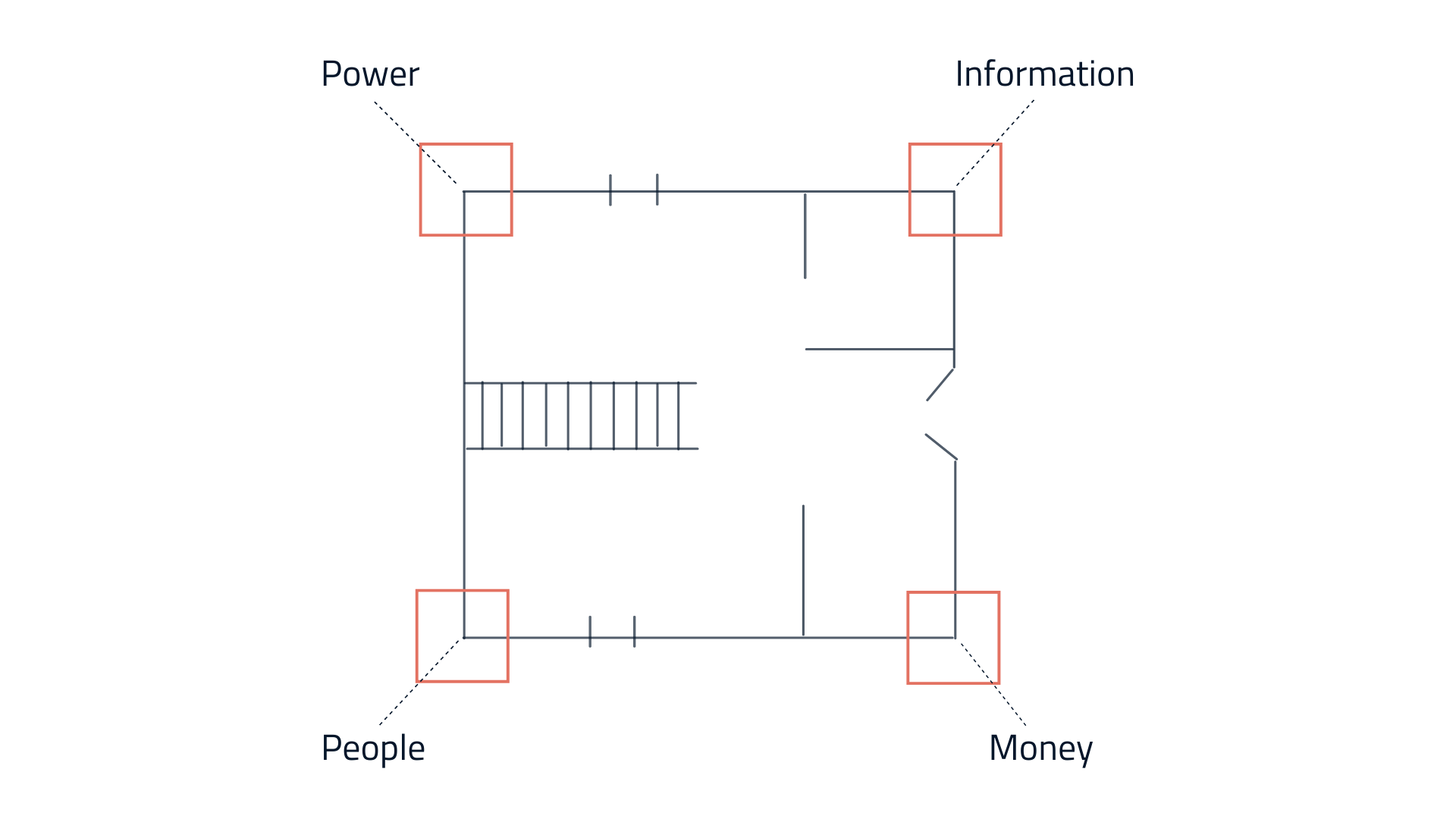Constructing a democratic workplace is similar to building a house. Both require a solid structure and ongoing attention. Just as a building won’t stand without four corner posts, neither will the workplace. If you want to create the fullest expression of democracy and the fullest productive potential for business success, all four corner posts must be strong.
The four corner posts of a democratic workplace are:

- Power: Power can mean workers’ power to voice opinions and contribute ideas in meetings, in teams, committees and in the cooperative as a whole. Power can also mean workers’ power to vote on key decisions or to vote for a board to represent the interests of worker-owners.
- Information: By sharing financial information, workers are motivated to improve business operations. When they connect their work performance to the business’s financial success, it empowers them to make more strategic decisions.
- People: Developing people so they can meaningfully contribute to the success of the business.
- Money: Sharing the financial rewards of the business is one of the strongest incentives for participation. When workers own a portion of the value they create in the form of shares or patronage, they are likely to want to create more of it.
The foundation for these four posts is the company’s mission and values. The wiring that connects the posts is trust and the current running through the wires is participation. An annual 360 review of management and democratic workplace practices and a survey of worker satisfaction can be likened to a building inspection. We believe all of these components are necessary to create the best conditions for workplace democracy.
Download our Guide to Democratic Management and use our democratic workplace checklist (see pg. 12) to assess your current democratic practices. When conducted, you'll be able to name your top priorities to help increase participation and democracy in your workplace.
